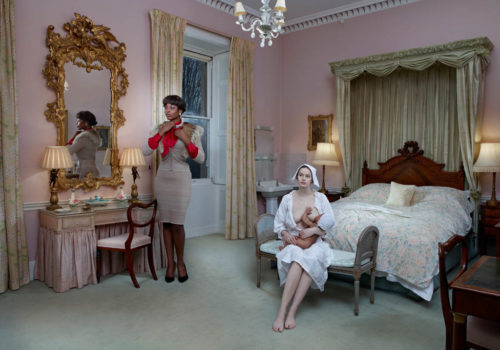The Edwardian era was short but significant. It only lasted from Queen Victoria’s death in 1901 until Edward’s own demise in 1910. But massive social and political change occurred throughout Britain as the old aristocracy began to lose their power base and the working class began to seek empowerment through the democratic and ultimately political process. The carnage and social fall-out from WW 1 completed the changes.
My theme in this project is inequity. At that time the division between the richest and poorest in society was vast, extreme poverty and its consequences was widespread. In order to escape poverty hundreds of thousands of men and women entered “service”. It was not the relatively comfortable life frequently illustrated in today’s TV programmes. There was exploitation and abuse, some of it sexual in nature. In Service exposes some of the going-on behind the walls of the houses of the privileged class in that era.
There were many levels of staff employed, some great houses employed staff in considerable numbers. Status was just as important among servants as it was elsewhere in society; the cook was responsible for all kitchen staff, the butler for all the staff engaged in the daily running of the house. The upper rank servants were entitled to hire, discipline and dismiss those for whom they were responsible. With the privilege of power it’s not surprising that there were many reports of servants abusing other, lower ranking, servants.
Male employers often looked to female servants as sexual partners. It was also not unknown for a lady of the house to form a liaison with male members of staff, as described by D.H. Lawrence in his notorious exposé of morals of the time, “Lady Chatterley’s Lover”. Gay sex between males was prohibited by a law passed in 1885 and was punished by imprisonment. Despite this, there was a significant upsurge in homosexuality in this era, especially among the intelligentsia and upper class. Notoriously, the famous playwright, Oscar Wilde, was sent to prison in 1897 after being arrested for ‘gross indecency’.
It was probably difficult for servants to resist the advances of their employers. Many may have thought that such a relationship would enable them to escape their lower class status. Affairs of this kind were secretive as both partners feared being caught. For servants the consequences were inevitably life-changing. If an affair did come to light, the servant would be immediately dismissed and thrown back onto the street. Being caught in a gay relationship could mean both participants would end up in prison.
Another risk for female servants was pregnancy. This would result in both loss of job and disgrace for the mother-to-be. Many expectant mothers ended up in a workhouse until the birth took place, then the baby was adopted and the mother left to restart her life. Some new mothers became wet-nurses, breast-feeding the babies of rich mothers, who either couldn’t or didn’t want to breastfeed their children themselves. Earlier, Queen Victoria had set a trend as she chose not to breast-feed any of her own nine children, complaining that she suffered enough in pregnancy and these had already ‘robbed’ her sufficiently of her powers as queen.
In Service concentrates on amoral episodes that took place in some of the stately homes of Britain during the Edwardian era. I was fortunate to find three stately homes in the south of England that provided eminently suitable backdrops for shooting the series. Built in the 18th Century their interior decorations closely resemble those found in grand houses in the Edwardian era. I dressed the servants in authentic Edwardian era style clothing. To heighten the class difference I went for a contrast in fashion styles and dressed some of the female employers in modern clothing designed by Alexander McQueen and Chanel.
Julia Fullerton-Batten
















